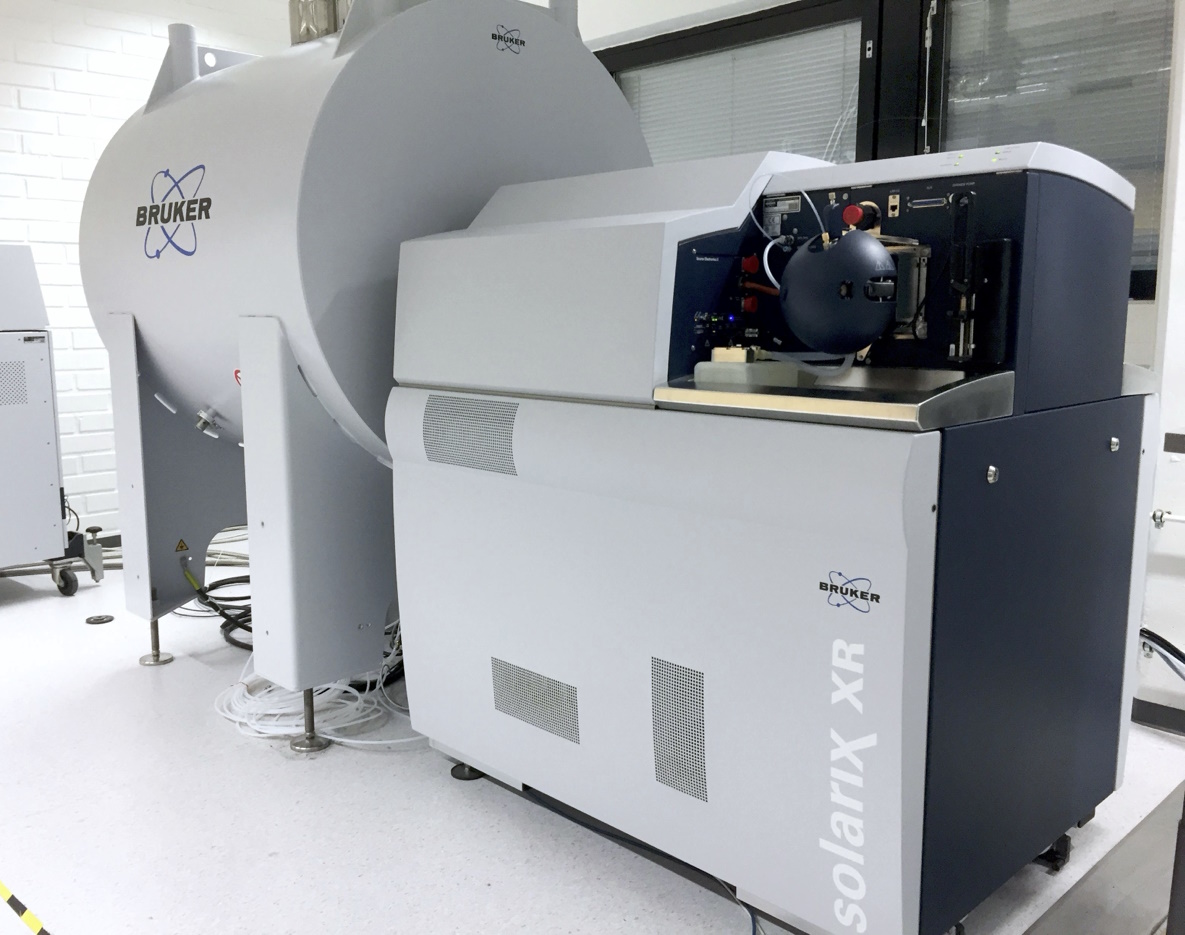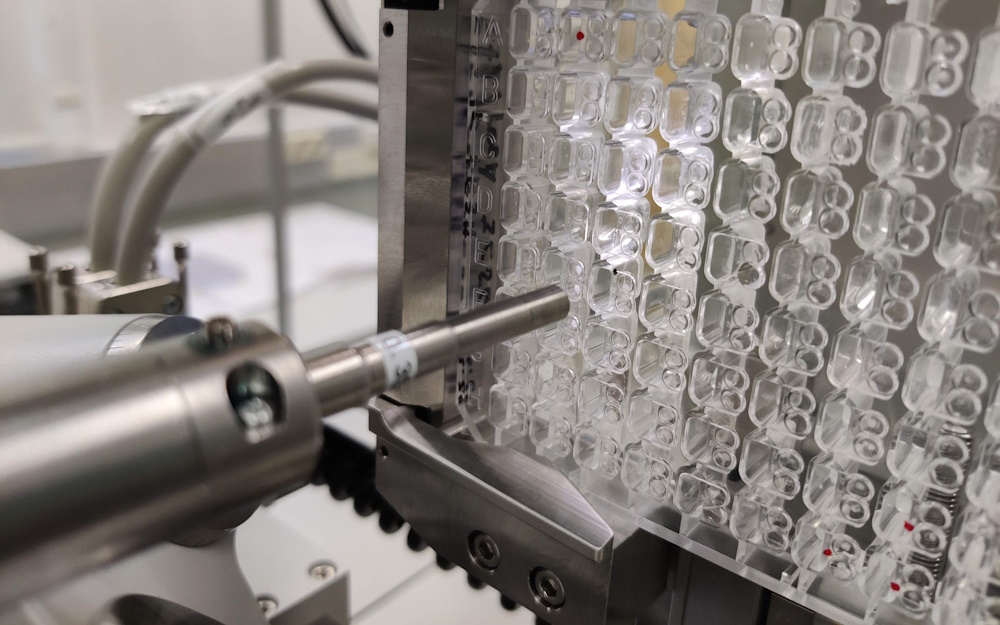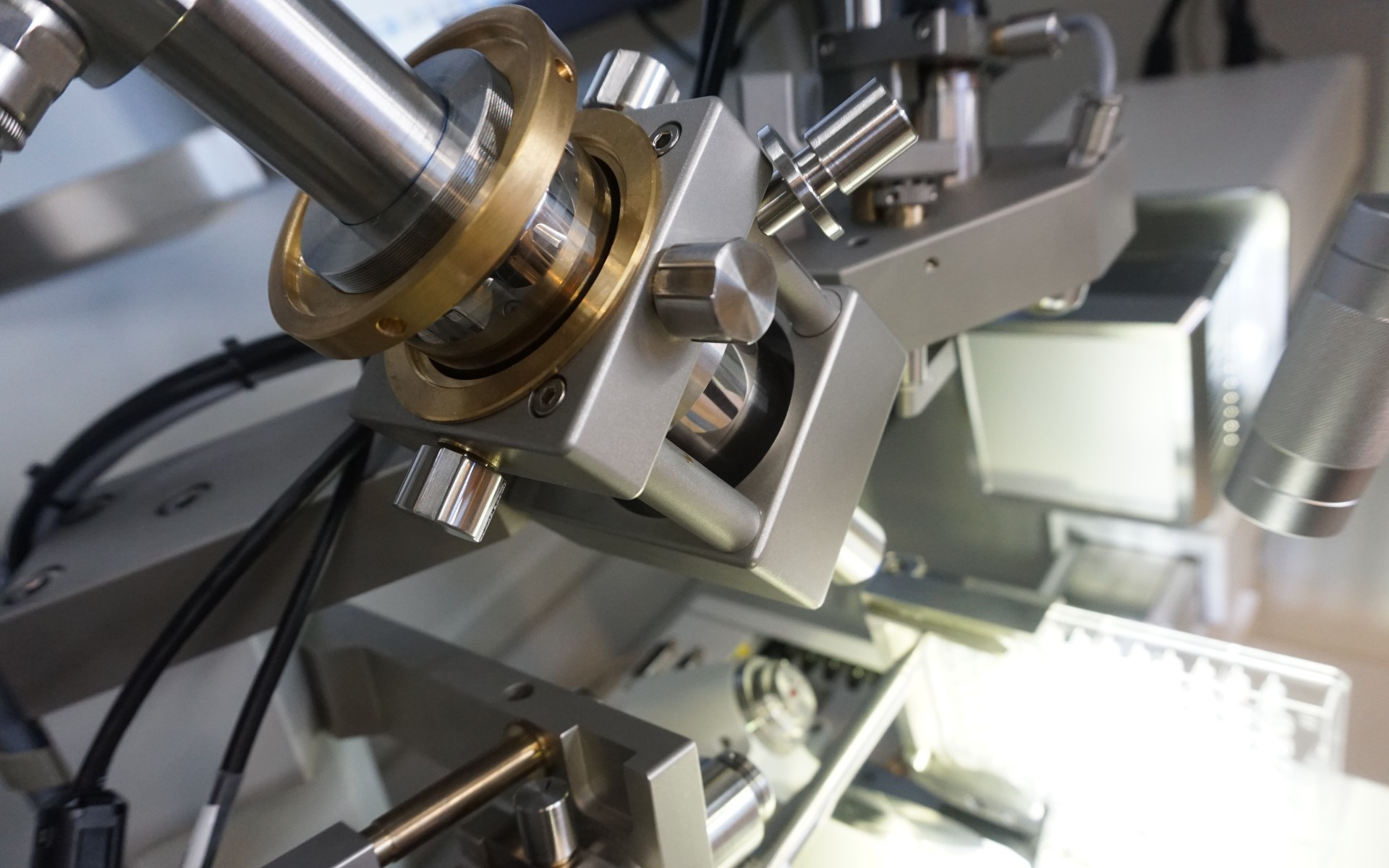We serve both academic and industrial users. The services can be used as a direct access which is available at the five FINStruct sites at the Universities of Helsinki, Oulu, Eastern Finland, Turku, and Åbo Akademi, and as an Instruct-ERIC supported access to the services of the Instruct-ERIC Centre Finland at the Universities of Helsinki, Oulu, and Eastern Finland. The use of services usually consists of the collection of data using imaging, measurement or analytical equipment or the purification of biological complexes. Experienced staff support the use of services and most of the services can be accessed remotely, requiring only shipping of samples.
Nodes
UEF: University of Eastern Finland; UH: University of Helsinki; UO: University of Oulu; UTU: University of Turku; ÅAU: Åbo Akademi University.
Contact details
Chair
Sarah Butcher, University of Helsinki
sarah.butcher@helsinki.fi
Vice Chair
Lari Lehtiö, University of Oulu
lari.lehtio@oulu.fi
Coordinator
Hanna Oksanen, University of Helsinki
hanna.oksanen@helsinki.fi
Coordination Hub, University of Helsinki
Joint coordination of FINStruct and ESFRI Instruct-ERIC Centre Finland (Chair Sarah Butcher, Coordinator Hanna Oksanen)
Services
Coordination Hub, UH
Biomolecular Complex Purification (Biocomplex), UH
Services/technologies provided:
- Preparative ultracentrifugation
- Asymmetrical flow field-flow fractionation (AF4) service (analytical and semi-preparative)
- Electrical AF4 (EAF4)
- Dynamic light scattering (batch mode)
- Monolith chromatography service
Biocomplex is specialized in biomolecular sample preparation and purification for functional and structural studies using preparative ultracentrifugation, monolithic chromatography and asymmetrical flow field-flow fractionation technologies. The use of our separation technologies is not limited to structural biology but can also support other research fields, such as biomedicine, pharmacy, biotechnology, environmental biology, plant science and virology. Biocomplex also actively develops new purification methods for large biopolymers, often in cooperation with manufacturers. Our technologies can be used in different combinations to analyze and purify large macromolecular complexes such as viruses, virus-like particles, viral subassemblies, exosomes, membrane vesicles, protein and ribonucleoprotein complexes as the first step towards the structural or functional analysis or sample composition analysis. Sample separation in AF4 and EAF4 can be coupled to characterization of molar mass, size, shape, charge and heterogeneity by utilizing online concentration and light scattering detectors. Samples produced at Biocomplex can be further studied at the CryoEM unit located in the same building (see CryoEM, Helsinki). We accept both visits and shipped samples. Both genetically modified organisms and Biosafety Level 2 samples (Finnish criteria) can be handled but may require acquisition of permits. If you aim to work with such organisms or your work requires Biosafety Level 2 (BSL2) facility, please contact us in advance.
Please contact grp-biocomplexservice@helsinki.fi for enquiries.
Cryo-Electron Microscopy (CryoEM), UH
Services/technologies provided:
- Vitrification of samples using plunge-freezing
- Vitrification of samples using blot-free robotics
- Automated data collection for single particles, electron tomography and microcrystal electron diffraction (microED)
CryoEM unit provides services in vitrification of samples using plunge-freezing or blot-free robotics, and automated cryoEM data collection for single particles, electron tomography and microED. CryoEM unit provides high-resolution imaging of nanoparticles, such as virus and protein complexes in the order of 100 kDa upwards (~5 to 300 nm in diameter). CryoEM is particularly useful for objects that are too large, unstable or variable to be studied by X-ray crystallography or NMR. It can be used to understand the structure, assembly and function of various biological macromolecule complexes. The unit has over 20 years experience in the preparation and optimisation of samples for cryoEM. Access is especially suitable for those wanting to screen samples and get small preliminary datasets that can be used as proof of principle for access to 300 kV machines or for longer data collection. Both genetically modified organisms and biosafety level 2 samples (Finnish criteria) can be handled but may require acquisition of permits per sample up to 40 days prior to handling. Correlative light microscopy and cryoEM is possible. We accept both visits and shipped samples. Biomolecular complexes studied by cryoEM can be purified in the Biocomplex purification facility located in the same building (see Biomolecular Complex Purification, Helsinki).
Please contact grp-cryoemservice@helsinki.fi for enquiries.
HiLIFE Protein Crystallisation Facility (HiLIFE Xtal), UH
Services/technologies provided:
- High–throughput crystallization and imaging
- X-ray and microED data collection/screening
- SEC-MALS/F-SEC analysis and differential scanning fluorimetry of samples
Structural Biology Core Facility (SBcore), UO
Services/technologies provided:
- Crystallography including data management
- Protein characterization and enzymology
- Ligand screening
SBcore at Biocenter Oulu offers services and support related protein crystallographic structure determination, protein characterization and ligand screening experiments. The facility hosts instruments to carry out high throughput crystallization experiments in nanoliter volumes, automated imaging instruments to follow crystallizations using an in house developed crystallography data management software IceBear (www.icebear.fi) and an inhouse X-ray diffractometer for crystal testing and data collection. SBcore provides protein and protein complex characterization tools aimed especially for studying the size and stoichiometry of macromolecular complexes. For enzymology both steady state and pre-steady state kinetics can be measured at the facility. Instruments are available for setting up screening experiments in high-throughput format both for crystallography and for screening assays. The SBcore maintains infrastructure for self use but also provides services on protein characterization, crystallization, and structure determination.
Native Mass Spectrometry Facility (Native-MS), UEF
Services/technologies provided:
- Intact protein & top-down/bottom-up high-resolution mass spectrometry
- Native mass spectrometry
- Ion mobility mass spectrometry
The facility provides services on high-resolution native mass spectrometry for protein structure and function analysis. The service portfolio is focused on intact protein characterization in native state, addressing aspects like protein-protein and protein-ligand interactions as well as structural topology and dynamics. In addition, protein sequence verification and post-translational modification (PTM) analyses are also offered. The instrumentation available at the facility currently includes an ultrahigh-resolution FT-ICR mass spectrometer (Bruker 12-Tesla Solarix-XR), equipped with a dynamically harmonized ICR cell which considerably improves sensitivity and resolving power for high-mass proteins. This instrument is currently the only FT-ICR mass spectrometer in Finland. The other instruments include an ion mobility mass spectrometer (Bruker timsTOF), which allows direct analysis of protein conformations and dynamics, and an ultrahigh mass range mass spectrometer (Thermo Q Exactive Orbitrap UHMR), which enables MS and MS/MS analysis of large biomacromolecular assemblies like viral capsids and even whole viruses.
Protein Structure and Chemistry Core Facility (UTU Xtal), UTU
Services/technologies provided:
- X-ray data collection (macromolecules and small molecules), powder diffraction
- Crystal optimization, testing, and characterization (in situ, RT, and 100 K)
- Mass photometry for protein quality controls
We have many years of experience in X-ray protein crystallography and complementary structural biology techniques. The facility offers services for all steps of protein structure determination, from purification and characterization to structure analysis and deposition. We give particular emphasis on sample quality, crystal optimization (including testing and characterization), and data collection (in-house and in synchrotrons). The facility is equipped with a MicroMax-007 microfocus rotating anode, a single-photon counting detector, in situ diffraction instrumentation, an Oxford Cryosystem, a crystallization robot, a crystallization plate hotel with a crystal imaging system, crystallographic software, molecular graphics, and an automated mass photometer (as part of the Turku Protein Core, a UTU infrastructure) for sample characterization and protein quality checks. The X-ray instrumentation is also used for small-molecule crystallography and powder diffraction.
Video of the facility’s activities and workflow: https://www.youtube.com/watch?v=JKPMZo5I8Wc
Structural Biology, Structural Bioinformatics Laboratory (SBL Xtal), ÅAU
Services/technologies provided:
- Sample preparation for structural studies
- Crystallization setups with all-in-one robotics
- Automated imaging and in situ X-ray testing of crystallization tray setups
The node provides services and expertise in protein sample preparation for structural studies to facilitate X-ray and cryoEM analysis. Our state-of-the-art instrumentation for crystallography includes the latest NT8 robot for setting up 96-well crystallization trays, two RockImagers (Formulatrix; one with UV detection of protein crystals) for automatic monitoring of crystal growth and PX scanner (Rigaku) for in situ X-ray testing directly from the trays. The protein samples – often in complex with other proteins, peptides, DNA/RNA, carbohydrates, lipids and/or small molecules – include many potential drug targets for health, life science and biotechnological applications. SBL Xtal combines experimental structural analysis with in silico modeling - we use both traditional and AI-based computational methods to support our experimental structure determination e.g. to aid target selection and construct engineering. We offer users access to instrumentation, training and expertise to design and perform their experiments as well as turnkey solutions.
Recent user publications
Mäkelä AR, Ugurlu H, Hannula LV, Salminen PS, Kant R, Fagerlund R, Haveri A, Strandin T, Kareinen L, Hepojoki J, Levanov L, Pasternack A, Naves R, Ritvos O, Osterlund P, Sironen T, Vapalahti O, Kipar A, Huiskonen JT, Rissanen I, Saksela K. 2023. Intranasal trimeric sherpabody inhibits SARS-CoV-2 including recent immunoevasive Omicron subvariants.Nat Commun 14, 1637 (2023). https://doi.org/10.1038/s41467-023-37290-6
Rahman MT, Koski MK, Panecka-Hofman J, Schmitz W, Kastaniotis AJ, Wade RC, Wierenga RK, Kalervo Hiltunen J, Autio KJ. 2023. An engineered variant of MECR reductase reveals indispensability of long-chain acyl-ACPs for mitochondrial respiration. Nat Commun. 14:619. doi:10.1038/s41467-023-36358-7. PMID: 36739436; PMCID: PMC9899272.
Bustad, H.J., Kallio, J.P., Laitaoja, M., Toska, K., Kursula, I., Martinez, A., Jänis, J. Characterization of porphobilinogen deaminase mutants reveals that arginine-173 is crucial for polypyrrole elongation mechanism, iScience 2021, 24. https://doi.org/10.1016/j.isci.2021.102152.
Premetis, G.E., Stathi, A., Papageorgiou, A.C. et al. Structural and functional features of a broad-spectrum prophage-encoded enzybiotic from Enterococcus faecium. Sci Rep 13, 7450 (2023). https://doi.org/10.1038/s41598-023-34309-2
Cuellar J, Åstrand M, Elovaara H, Pietikäinen A, Sirén S, Liljeblad A, Guédez G*, Salminen TA*, Hytönen J.* Structural and biomolecular analyses of Borrelia burgdorferi BmpD reveal a substrate-binding protein of an ABC-type nucleoside transporter family. (2020) Infection and Immunity 88(4):e00962-19.




Other relevant topics
The following services are also available at the Instruct-ERIC Centre Finland through Instruct-ERIC, where you can apply for funded access.
More information here:
https://instruct-eric.org/submit-proposal/?t=instructeric
- Biomolecular Complex Purification (Biocomplex), Helsinki, Finland
- Electron Microscopy, Helsinki, Finland
- Single-cell Proteomics (SCoPE-MS), Helsinki, Finland
- Macromolecular Crystallisation, Oulu, Finland
- Molecular Biophysics, Oulu, Finland
- X-ray Diffraction, Oulu, Finland
- Native Mass Spectrometry, Joensuu, Finland


